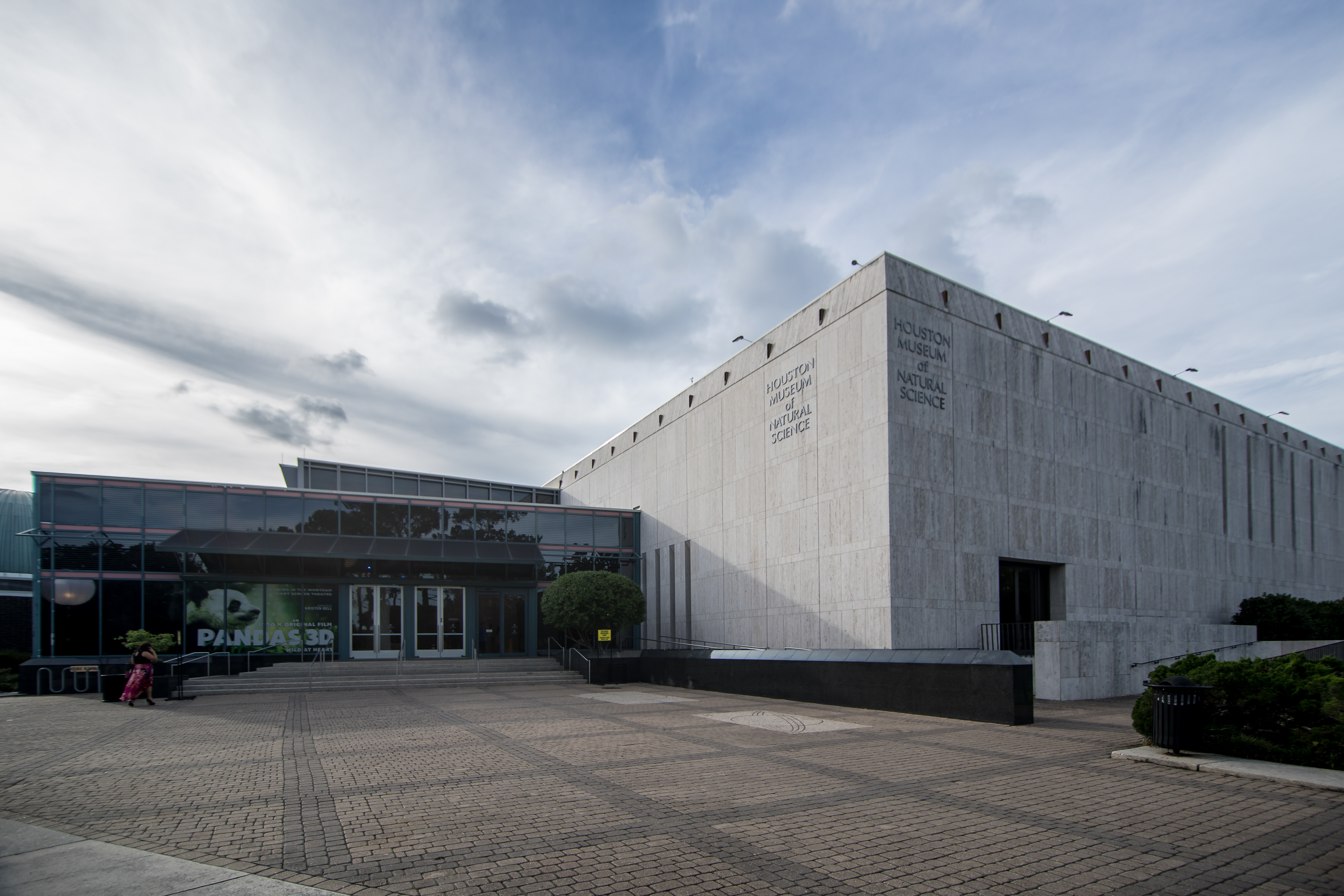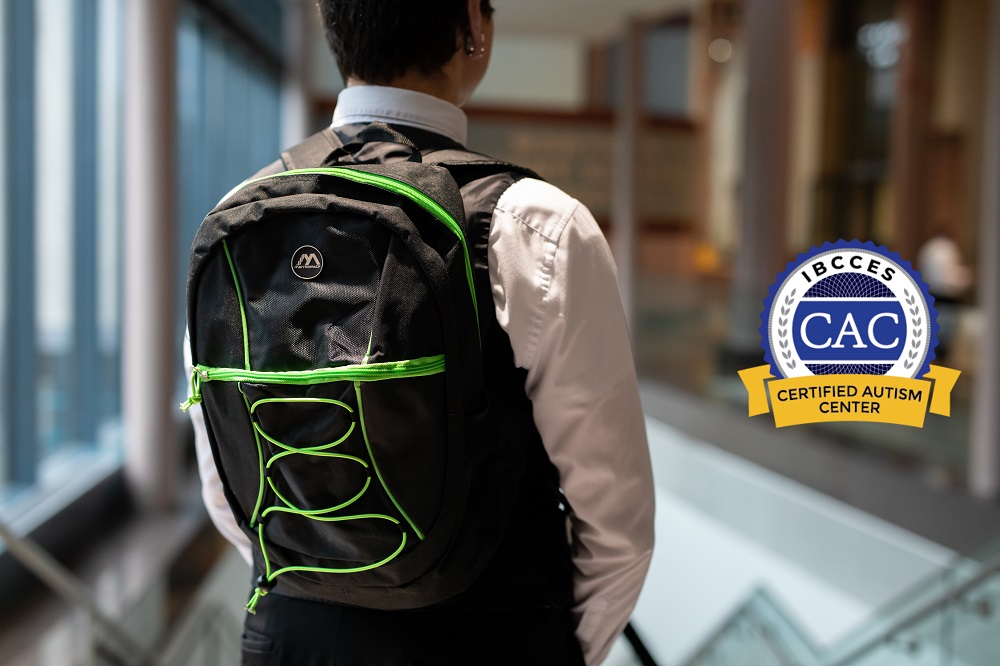Demonstrating Commitment through Certification: a Q&A with Matti Hammett, Houston Museum of Natural Science
To Matti Hammett, Accessibility Programs Manager at the Houston Museum of Natural Science (HMNS), “accessibility means working towards opening doors for audiences that may not have been historically focused on or prioritized.” Earlier this year, HMNS achieved recognition as a Certified Autism Center by theInternational Board of Credentialing and Continuing Education Standards (IBCCES), demonstrating their commitment to creating accessible and inclusive experiences.

VSA and Accessibility: This designation demonstrates HMNS’ devotion to access and inclusion. What did your accessibility and sensory-friendly programming look like before pursuing this certification?
Matti Hammett: Before we went through the certification process, we did offer sensory friendly events three times annually where exhibits and shows were modified to be sensory-neutral to the best of our ability. We also had a sensory-friendly app, sensory backpacks, visual vocabulary cards, a social story, and a sensory guide in place. We communicated with staff about best practices when serving this audience, but a standardized staff training was the missing component to our offerings. The modules that IBCCES created were so helpful in bringing everyone up to speed and on the same page about how to serve this audience. Now our employees feel confident and empowered when they are recommending resources, programming, or exhibits to patrons visiting HMNS, or helping to deescalate a situation where a patron may be feeling uncomfortable or overwhelmed in our museum.
VSA and Accessibility: How were you made aware of the certification?
Matti Hammett: My coworker, Julia Russell, researched the certification and made me aware of it. Our colleagues over at Johnson Space Center had received the certification, and that’s what initially brought the possibility of this certification onto our radar.
VSA and Accessibility: How did you achieve organizational buy-in across all levels to pursue the designation?
Matti Hammett: The opportunity to pursue this designation came at a time when the museum had just promoted me to the position of full-time Accessibility Programs Manager and made accessibility a top institutional priority, so there was a lot of support. Before I was promoted to this position, I worked with two of my colleagues, Julia Russell and Sahil Patel, to create the accessibility initiatives at HMNS. We implemented staff training, conducted presentations to the board, and collected data to support our cause in order to exemplify the ethical and cultural need as well as institutional benefits to making the museum a more accessible place. There was a lot of support from frontline staff who saw the need for expanding accessibility initiatives based on their day-to-day interactions with patrons. There was also support from my supervisors and our administration who saw the need as well, but also saw our peer organizations expanding their initiatives and wanted to join in the effort. I think there’s been a movement within the Houston Museum District to jointly make our cultural institutions as accessible as possible.
VSA and Accessibility: Can you explain the process of working with IBCCES?
Matti Hammett: IBCCES has been wonderful to work with. They’ve been extremely present and responsive throughout the process, even when I had a million questions. Luckily, they’ve had a lot of experience with all different types of cultural institutions, theme parks, hotels, etc. so there wasn’t a question I had that they didn’t have a thorough answer to. The process began when I reached out for a quote, then we had an initial kick-off conference call where the certification process was explained in detail, and then training began. Once training was complete, the representatives that I had been working with assured me that they would be there as a resource for HMNS throughout the 2-year certification and beyond, and we’ve had calls and emails for check-ins and brainstorming sessions about how HMNS can become even more accessible since then. They are also very helpful in explaining additional training opportunities and ways to receive funding if these trainings are not in your initial budget.

VSA and Accessibility: What were the requirements of the certification?
Matti Hammett: Eighty percent of our customer-facing staff successfully completed training and are certified in the field of autism. HMNS also decided to put a selection supervisors and managers through additional, extensive training.
VSA and Accessibility: What has the staff response been to the additional training?
Matti Hammett: When we began the training process, before they were completely sure about what the training would entail, there was some uncertainty among the staff. After we started the process, and staff began completing the training, the response was extremely positive. I had conversations with coworkers who had no personal connection to someone with autism and expressed how enlightening the videos and training were. Other members of our staff got emotional seeing how difficult a typical day can be for someone with autism. After the training was complete and staff could put what they learned into practice, I heard feedback that my coworkers were thankful that they knew how to help a patron with autism or sensory sensitivities and felt empowered to do so.
VSA and Accessibility: Have you partnered with any other organizations or consultants during the process (in the development of sensory guides, materials, etc.)?
Matti Hammett: Throughout this particular process of becoming a Certified Autism Center, HMNS worked with IBCCES.
For additional accessibility initiatives and resources that we’ve put into place, HMNS has partnered with: SPARK/ Baylor College of Medicine, Autism Rescue Angels, Focus groups of parents of children with autism, adults with developmental disabilities, teachers of students with autism, psychologists, Scouts BSA, Texas Workforce Solutions and Vocational Rehabilitation Services, and Rice University.
VSA and Accessibility: In your press release you stated IBCCES works to ensure the program is a long-term commitment, what is HMNS implementing to ensure this?
Matti Hammett: IBCCES provides you with tools, such as sensory guides and an audit of the building, to ensure that you continue to have information you need in order to move forward and make progress with offering more resources for visitors with autism and sensory sensitivities. They also work with us as an organization to continue to consult and provide learning opportunities such as webinars throughout our 2-year certification. HMNS has already implemented certain suggestions from the IBCCES audit, such as reviewing certain protocols to allow for more flexibility based on individual’s needs, creating a welcome video that explains certain accessible offerings before you step foot in the building, and offering an accommodation request form online where patrons can see the different accommodations we can offer them all in one place. Other suggestions from the IBCCES will take more time, but they are included in our plan moving forward. We are committed to creating additional resources and tools in order to serve this audience, and trust the expertise of the IBCCES. The training through IBCCES has sparked an understanding and passion within our staff to continue to serve audiences with different needs, and I think this communal goal is the biggest takeaway from this process for us in ensuring our long-term commitment to making HMNS a more welcoming place.
VSA and Accessibility: What is your top piece of advice to other cultural institutions looking to increase their accessibility?
Matti Hammett: Start with the low-hanging fruit, and move your way up from there! Make sure your patrons know that you are committed to serving them and that you welcome their own advice and expertise—definitely include them in the process. Don’t move too fast, because you want to ensure that you’re offering a quality program or resources that fills the needs of the visitors that you’re aiming to serve. One of the things I’ve talked with representatives from other institutions about is that it’s hard to implement accessible offerings without a specified budget or funding, which is often the case and was HMNS’ experience when we began creating accessible resources and programming. I’ve found that if you start small and utilize the resources that you do have, like your community, passion, and network of contacts, then the funding will come from there!
Images courtesy of Mike Rathke/Houston Museum Of Natural Science.
